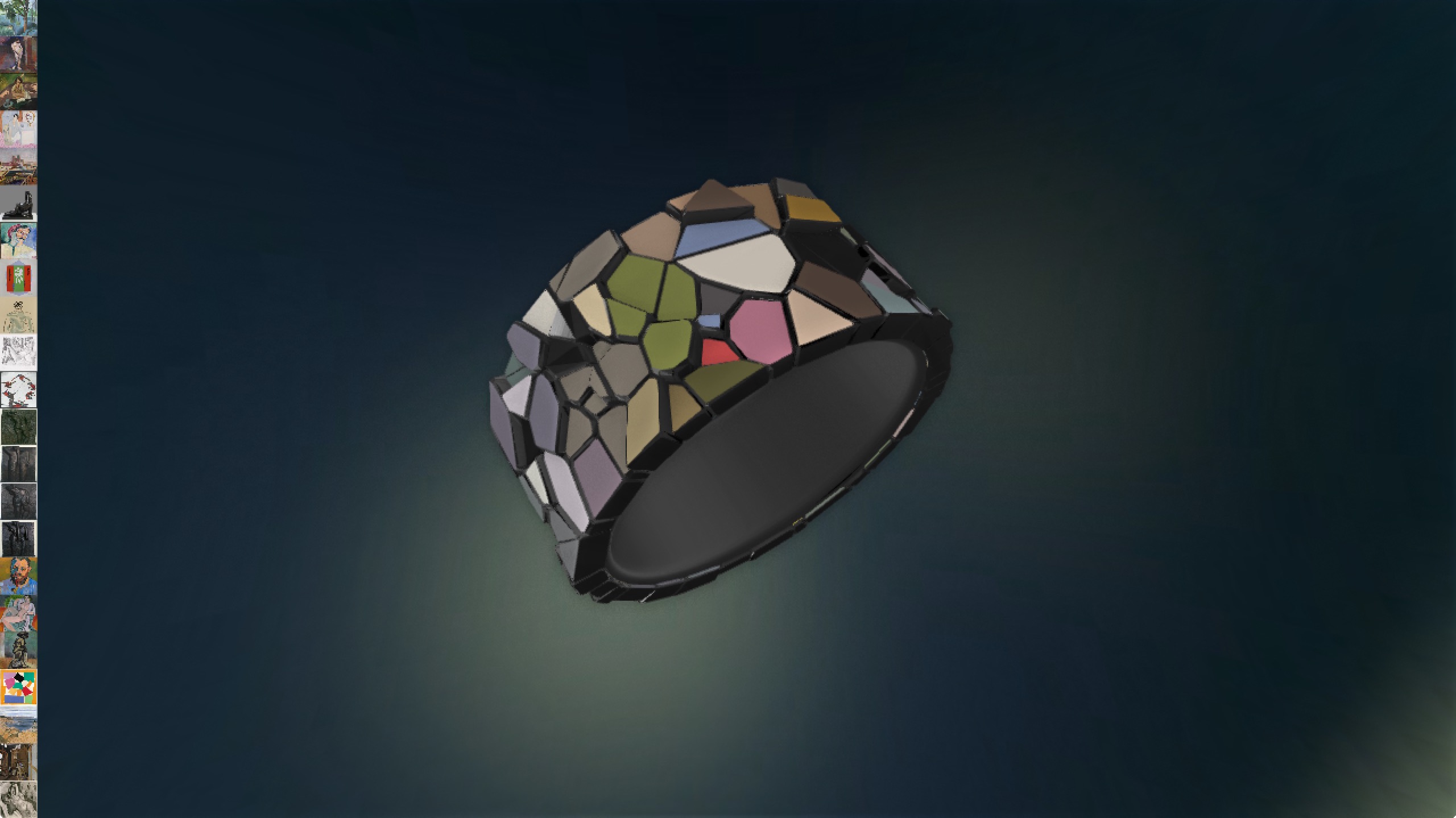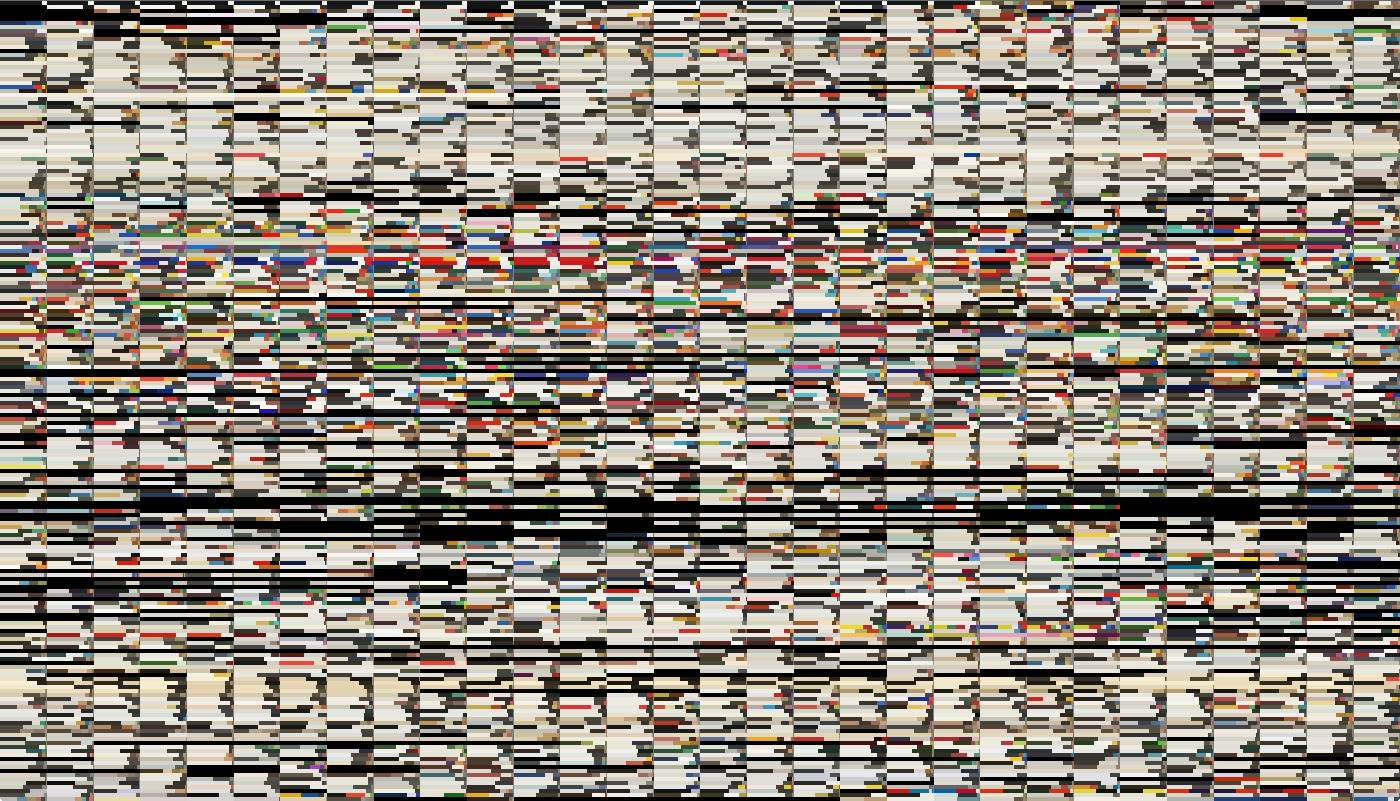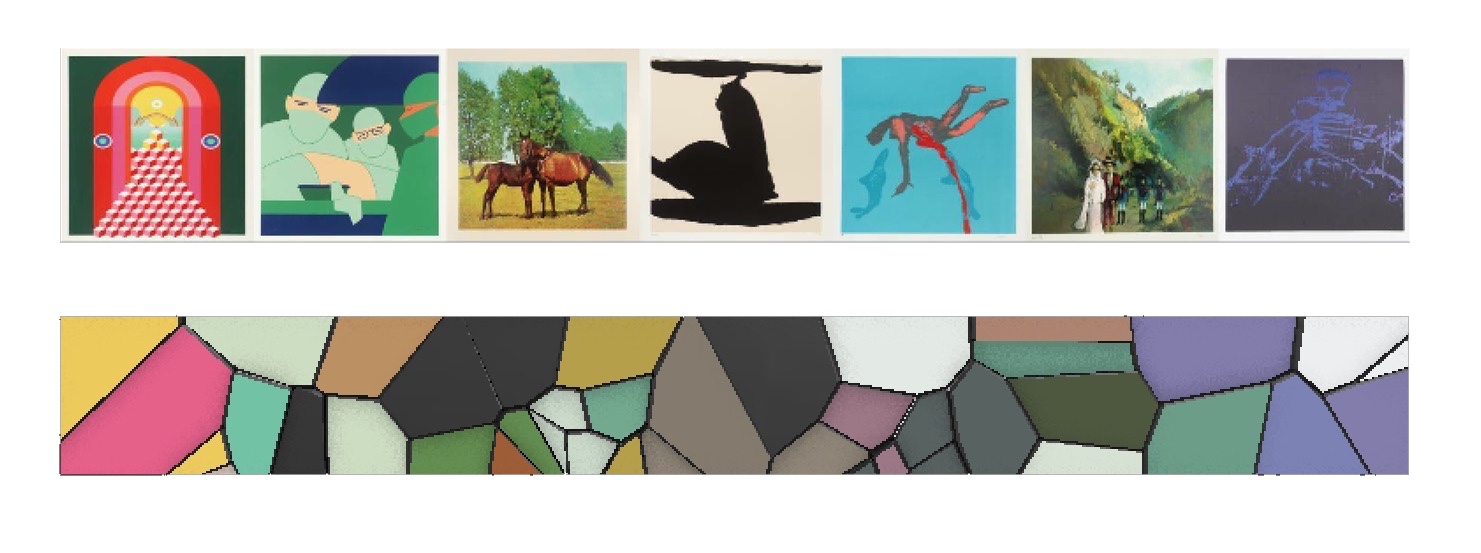Tatelets

Tatelet is a generative bracelet based on artworks from Tate Modern collection.
Developed during at Hack The Space 24h hackaton at Tate Modern the projects transforms images of the artworks you have seen during your visit in to a bracelet encoding the history of your visit.
Each of the artworks selected by you would be analized by an algorithm measuring the image complexity and it's key colors palette. That data would be later used to generate a pattern on the bracelet.
The complexity of the image drives the number of surface fractures while the key colors are applied to the resulting tiles.
Data
Earlier in 2014 Tate Modern released the metadata about "Concise catalogue entries” for all wholly owned artworks in the Tate collection and we decided to use them as a starting point.
Each one of the 69'202 artworks has it's author, creation date, format, short description, url on the website and link to a preview image.
Sample of the dataset:
8408,P04568,"Lausen, Jens",artist,1475,Map No. I Aircastle,1969,
Screenprint on paper,Presented by Rose and Chris Prater through
the Institute of Contemporary Prints 1975,1969,1975,
image: 679 x 562 mm,679,562,,mm,date inscribed,© Jens Lausen,
http://www.tate.org.uk/art/images/work/P/P04/P04568_8.jpg,
http://www.tate.org.uk/art/artworks/lausen-map-no-i-aircastle-p04568
Images
We then wrote a script to download all the 60k images over the night.

Complexity
To measure very roughly how complex is the image we came up with an idea of first applying an edge detection algorithm, counting white pixels and finally normalizing that number by the image size.
Kirill Kulikov wrote the implementation using Scala and OpenCV.

The resulting "complexity score" worked surprising well.

Color palette
To extract the key colors I used an Octree Color Quantization algorithm i've implemented earlier in JavaScript. It builds a 3D hierarchy of all pixels inside a RGB cube and allows to extract generalized colors.

If you wonder why so many of the colors are beige it's because of huge amount of sketches and illustrations in the Tate's collection.
Palette generator in action.
Pattern
We use the Voronoi algorithm with the points distribution driven by the complexity of the selected artowrks.

Final algorithm
- Select images (manually)
- Calculate complexity & extract color palette
- Build a patter and wrap it on a circle forming the bracelet

Interactive version
You can play with the Interactive Version or see the video below.
Paper prototypes
As Me and Kiril were working on the code Bettina Nissen created these paper prototypes as a prof of concept. Ideally we would like to 3d print them in the future.
!IMG2,paper_1.jpg,paper_2.jpg